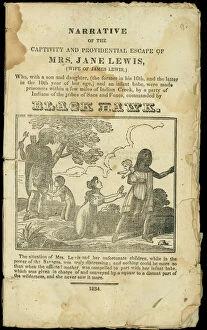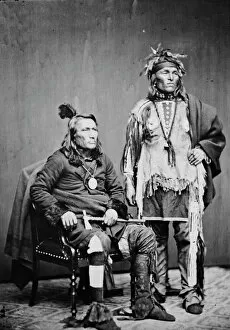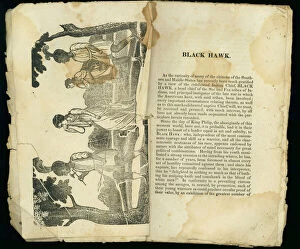Potawatomi Collection
The Potawatomi tribe of Michigan possessed a rich and diverse culture, with their medicinal practices being particularly noteworthy
For sale as Licensed Images
Choose your image, Select your licence and Download the media
The Potawatomi tribe of Michigan possessed a rich and diverse culture, with their medicinal practices being particularly noteworthy. The Potawatomi Medicine Stick served as a repository for numerous recipes that held the power to cure various ailments. This stick was revered by the tribe, symbolizing their deep connection to nature and their profound understanding of herbal remedies. In the early 19th century, the Potawatomi people were entangled in conflicts with settlers, resulting in tragic events such as the captivity of Mrs. Jane Lewis. Her narrative recounts her harrowing experience and miraculous escape from her captors' clutches, shedding light on the struggles faced by both sides during this tumultuous period. Amongst these conflicts emerged prominent figures like Black Hawk, a renowned Potawatomi chief and brave who played a significant role between 1855 and 1865. His leadership skills and bravery made him an influential figure within his tribe. Engravings from May 1832 depict two young ladies taken prisoners by savages during times of war and pestilence. These images serve as haunting reminders of the hardships endured by innocent victims caught in the crossfire between settlers and Native American tribes. George Catlin's artwork further immortalizes Native American history through his depictions of On-saw-kie, The Sauk engaged in prayer rituals, as well as three Potowotomie Indians captured in striking detail during 1861-1869. The Fort Dearborn Massacre memorial stands as a solemn tribute to those who lost their lives during this tragic event around c1897. It serves not only as a reminder but also highlights the importance of acknowledging historical atrocities committed against indigenous communities. Mrs. Heald's encounter with savages at Chicago is another poignant moment etched into history; it captures both fear-inducing encounters faced by settlers while emphasizing empathy towards Native Americans whose lands were being encroached upon.







